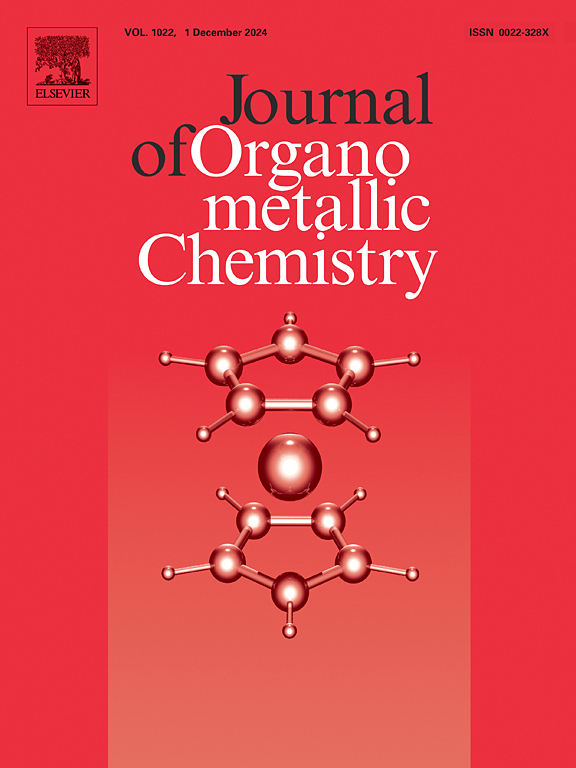Green four-component reaction and dye adsorption studies of new ZnCoAl-LDH and ZnCoCr-LDH materials
IF 2.1
3区 化学
Q3 CHEMISTRY, INORGANIC & NUCLEAR
引用次数: 0
Abstract
The present work aims to synthesis two LDH materials such as ZnCoAl-LDH and ZnCoCr-LDH to investigate their catalytic effect and the adsorption properties. The as-produced materials were prepared by Co-precipitation method and their structures were confirmed using various complementary characterization techniques mainly scanning electron microscopy (SEM) and element mapping, Energy-dispersive X-ray spectroscopy (EDX), Attenuated Total Reflectance-Fourier Transform Infrared Spectroscopy (ATR-FTIR), X-ray diffraction (DRX), and Thermogravimetric Analysis (TGA/DTG). However, the LDH materials were tested in four-component reaction as a heterogeneous catalyst. For this purpose, the elaborated catalyst was used to produce dihydropyran-pyrazole derivatives under green condition. The structure of both dihydropyrano-pyrazoles was characterized based on 1D, 2D NMR. Otherwise, the adsorption potential of ZnCoAl-LDH and ZnCoCr-LDH was evaluated by removing Congo red (CR), as an anionic dye, from an aqueous solution. The effects of influential adsorption parameters such as pH, initial CR concentration, contact time and adsorbent dosage on CR removal were investigated. ZnCoCr-LDH proved more effective at adsorbing CR, with maximum removal of 98 % observed at pH 2, while ZnCoAl-LDH showed 93 % removal. The adsorption isotherms of the system were described using Langmuir, Temkin and Freundlich models. The maximum adsorption capacity of ZnCoAl-LDH and ZnCoCr-LDH was calculated on the basis of the Langmuir isotherm and amounted to 272.756 mg/g and 391. 920 mg/g respectively. The Freundlich model also shows a good fit for ZnCoAl-LDH (R2 = 0.999), although it is generally less relevant than the Langmuir model. However, the adsorption kinetics of CR on the surface of ZnCoAl-LDH materials was defined by the PFO model, while ZnCoCr-LDH followed the PSO model.
新型ZnCoAl-LDH和ZnCoCr-LDH材料的绿色四组分反应及染料吸附研究
本工作旨在合成ZnCoAl-LDH和ZnCoCr-LDH两种LDH材料,研究其催化效果和吸附性能。采用共沉淀法制备了产物,并利用扫描电镜(SEM)和元素映射、能量色散x射线能谱(EDX)、衰减全反射-傅里叶变换红外光谱(ATR-FTIR)、x射线衍射(DRX)和热重分析(TGA/DTG)等多种互补表征技术对其结构进行了鉴定。然而,LDH材料在四组分反应中作为非均相催化剂进行了测试。为此,在绿色条件下利用该催化剂制备了二氢吡喃吡唑衍生物。通过一维、二维核磁共振对两种二氢吡喃吡唑的结构进行表征。另外,通过从水溶液中去除阴离子染料刚果红(CR)来评价ZnCoAl-LDH和ZnCoCr-LDH的吸附势。考察了pH、初始CR浓度、接触时间、吸附剂投加量等影响吸附参数对CR去除率的影响。ZnCoCr-LDH对CR的吸附效果更好,pH值为2时最大去除率为98%,而ZnCoAl-LDH的去除率为93%。用Langmuir、Temkin和Freundlich模型描述了体系的吸附等温线。根据Langmuir等温线计算ZnCoAl-LDH和ZnCoCr-LDH的最大吸附量分别为272.756 mg/g和391 mg/g。920 mg/g。Freundlich模型也显示了ZnCoAl-LDH的良好拟合(R2 = 0.999),尽管它的相关性通常低于Langmuir模型。然而,CR在ZnCoAl-LDH材料表面的吸附动力学采用PFO模型,而ZnCoCr-LDH材料表面的吸附动力学采用PSO模型。
本文章由计算机程序翻译,如有差异,请以英文原文为准。
求助全文
约1分钟内获得全文
求助全文
来源期刊

Journal of Organometallic Chemistry
化学-无机化学与核化学
CiteScore
4.40
自引率
8.70%
发文量
221
审稿时长
36 days
期刊介绍:
The Journal of Organometallic Chemistry targets original papers dealing with theoretical aspects, structural chemistry, synthesis, physical and chemical properties (including reaction mechanisms), and practical applications of organometallic compounds.
Organometallic compounds are defined as compounds that contain metal - carbon bonds. The term metal includes all alkali and alkaline earth metals, all transition metals and the lanthanides and actinides in the Periodic Table. Metalloids including the elements in Group 13 and the heavier members of the Groups 14 - 16 are also included. The term chemistry includes syntheses, characterizations and reaction chemistry of all such compounds. Research reports based on use of organometallic complexes in bioorganometallic chemistry, medicine, material sciences, homogeneous catalysis and energy conversion are also welcome.
The scope of the journal has been enlarged to encompass important research on organometallic complexes in bioorganometallic chemistry and material sciences, and of heavier main group elements in organometallic chemistry. The journal also publishes review articles, short communications and notes.
 求助内容:
求助内容: 应助结果提醒方式:
应助结果提醒方式:


